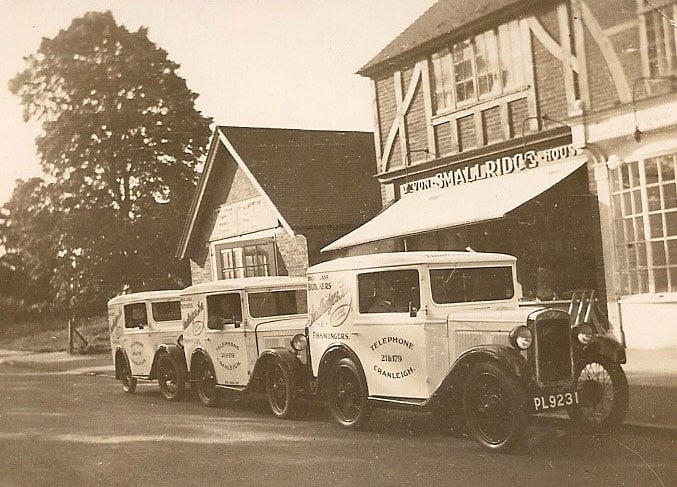
Cheesman’s workshop and Smallridge’s shop, about 1932 (courtesy of David Cragg)
What does a skilled craftsman do, when mechanisation and technological advances make his skill redundant? The Cranleigh wheelwrights faced this situation around 1920. It had come about in a surprisingly short time. Cars took over from wagons and carts in less than twenty years. So the wheelwrights developed some of their sub-set of skills. Sign-writing was still needed for commercial vans and could be used for shop signs and house name-plates. And their expertise at body-restoration could be transferred from horse-drawn vehicles to cars. The younger members of the family became expert car mechanics too.
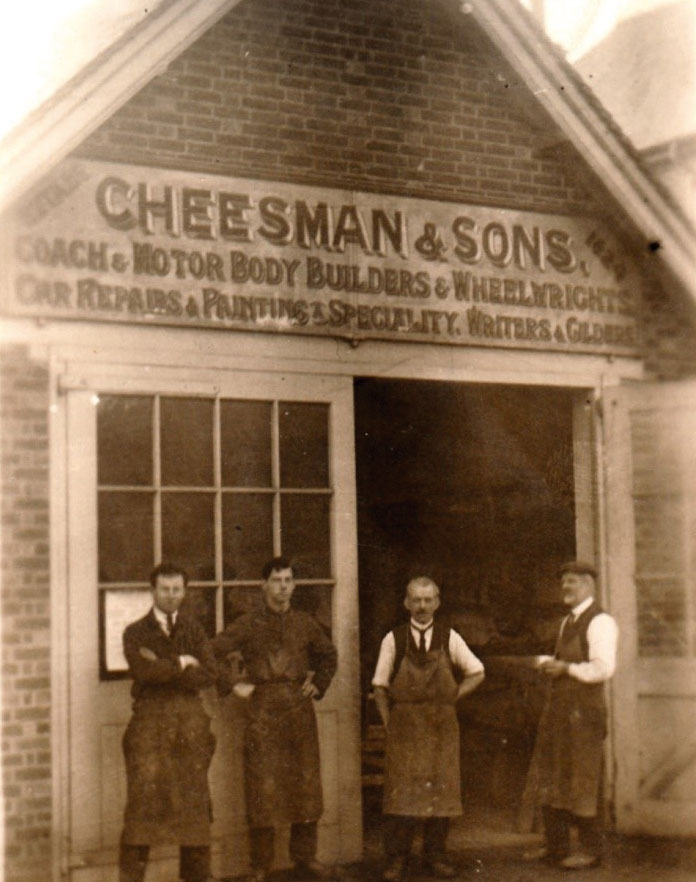
The wheelwrights’ new workshop in the 1920s. (left to right) Frank Cheesman, Harry Cheesman, Jim Laker, the smith and Chris Cheesman. This building was formerly the Seeboard shop and now the Vaping shop
Vacant plots of land were still available in the 1920s right in the centre of Cranleigh, so James Cheesman, the wheelwright, took the decision with other members of his family (his son, brothers and nephews), to move from their yard and buildings (behind what is now the Arts Centre) and set up a new workshop on the main road, with a forge at the back. Erected by Warren’s building firm, it cost £800. Soon after, Smallridge’s butcher’s shop was built next door (now Rawlings).

Warren’s invoice for the new workshop and forge in the Village, 1923 (courtesy of Catherine Ferrier)
Much of the work involved repairing and respraying cars. Besides this, there was still work provided by horse-drawn vans. There were plenty of these, owned by greengrocers, bakers and butchers, until after the Second World War, so the old wheelwright’s skills came into use. In 1933, they had the excitement of restoring a van belonging to the baker on the Common, George Pirie, which Cheesman’s had built in the old workshop 21 years previously!
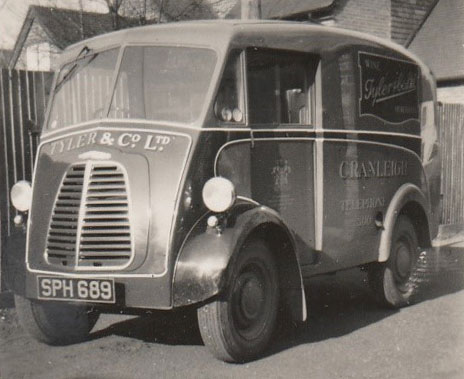
Tyler’s Morris van, repainted in 1953 (courtesy of Charlie Field)
Soon after the Second World War, the nearby Railway and Onslow garage (on the site of the present large Boot’s), run by Jack and Fred Butcher of the Onslow Arms, bought Cheesman’s, and carried on car painting and restoration there. Meanwhile, Frank Cheesman made the signwriting a separate business. This continued to be profitable, and in the 1960s he could be seen in the High Street with his trestles and planks attending to David Mann’s signage, and that of Farrow & Co (an electrical business), W.E. George & Son (fishmonger’s, and next-door-but-one neighbours), the Oak Room café and the Bookshop, besides various local house signs and commercial vehicles.
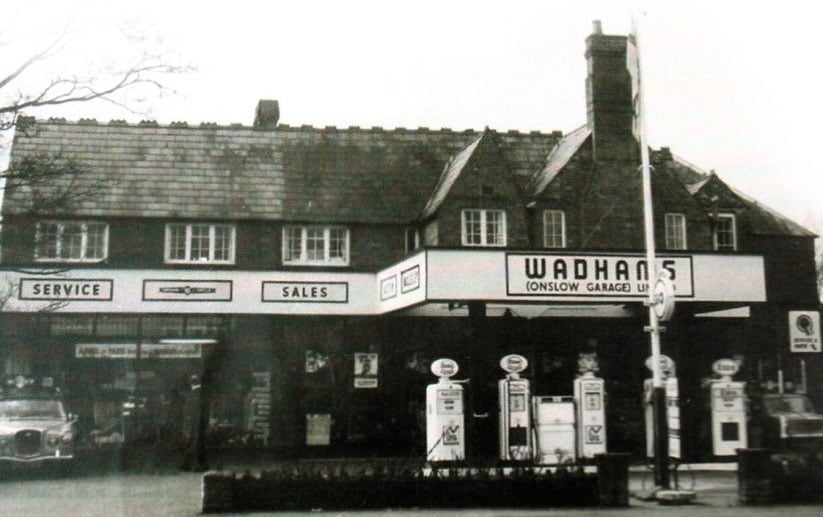
Wadham’s, owners of the workshop, in the 1960s (courtesy of Michael Miller)
These were exciting times, when many veteran and vintage cars were restored. The painting was done meticulously by hand and involved numerous coats of paint – in one case, eleven! They maintained the paint and signage on all the vans of the high-class grocer, Tyler’s, and even painted the bobsleigh of the British four-man team in the 1968 Olympics.
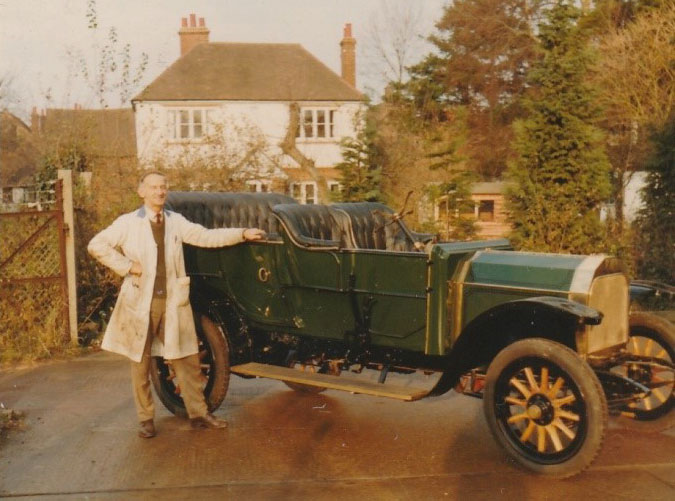
1909 Dennis Tourer, repainted 1969, with Harry Cheesman (courtesy of Charlie Field)
The Railway & Onslow garage sold out to Dorking Motor Company by 1963; then to Wadham’s of Guildford, in the mid-1960s; and in 1971, Wadham’s sold up.

1902 Dennis Tonneau, repainted 1967 (courtesy of Charlie Field)
The car restoration workshop became successively Seeboard, Carter’s (selling white goods) and Julian Graves (health foods). Two cycle businesses, Pedal and Spoke, and Maison du Vélo, followed in succession between 2013 and 2018. Businesses concerned with wheels seemed appropriate successors to the wheelwrights’ business. Cycling was enjoying a revival in popularity after the London Olympics of 2012, particularly in the Surrey Hills. The coffee room was popular with plenty of passing cyclists, but not enough bicycles were sold for them to make a profit.
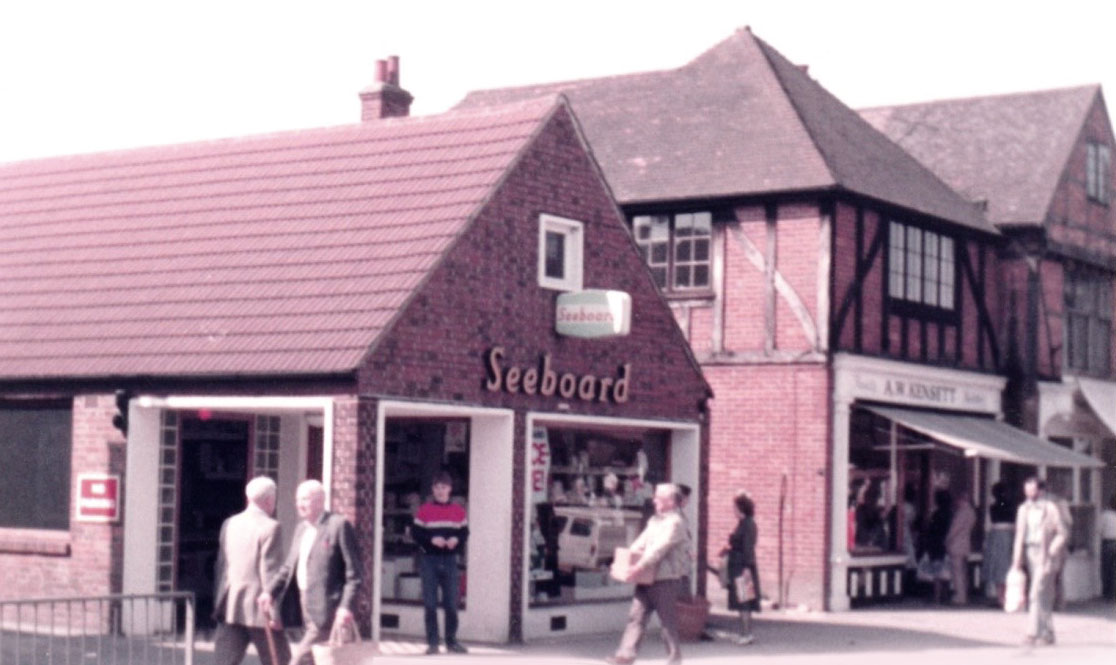
Seeboard, 1984, with Alan Wood (pictured in the doorway) a great, great grandson of Mark Cheesman, wheelwright of Cranleigh from 1857
It has now become The Vape Shop, selling alternatives to cigarettes. In 100 years, the wheelwright’s workshop has had a very varied career in Cranleigh’s High Street.
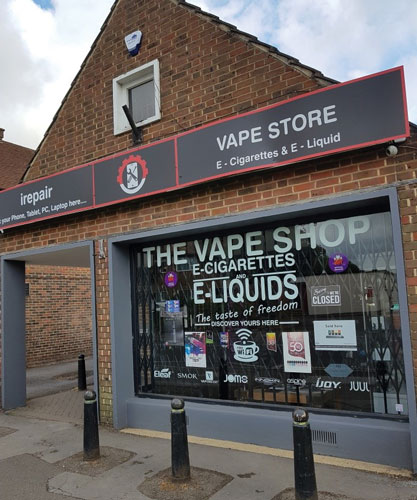
The Vape Shop, 2020 (courtesy of Cath George)
(Grateful thanks to Brian Cheesman and Charlie Field for photos and help.)
The Cranleigh History Society is provisionally planning to resume its monthly meetings in January 2021.











